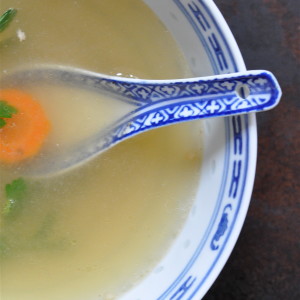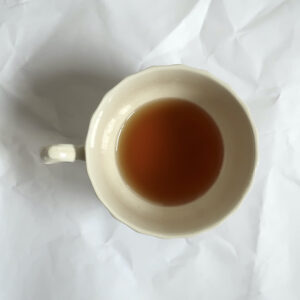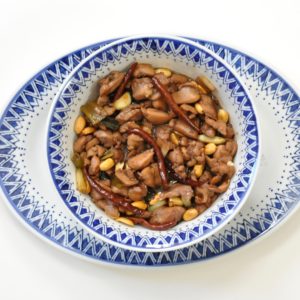Chicken Broth
One of rare disease’s more entertaining aspects is its unpredictability. There’s the gradual dawning that your body works differently than everyone else’s, and that differently doesn’t signify you’re the next Wayne Gretzky or Nadia Comaneci. Next comes the quest for diagnosis. Once you have a name for your special weirdness, the real fun begins: Elisabeth Kubler-Ross stages of grieving, treatment regimens ranging from crystals and chanting to western medications so dire you’re warned not to throw any leftovers in your trash, lest homeless rummagers suffocate on your dosages. All this to the hit soundtrack single sung by clueless relatives, well-meaning friends, and nasty supervisors entitled: “But You Look Just Fine.”
When throbbing calf pain woke me yesterday morning, I wondered how I’d pulled a muscle. It’s not like I’d gone running. As the pain wound around the back of my left knee, where my worst varicose veins live, I realized what was amiss.
Phlebitis is the inflammation of a vein or veins, usually in occurring in the lower leg, but it can and does strike anywhere, usually following injury.The afflicted vein hardens, the surrounding skin reddening and swelling. If left untreated, blood clots can form, and in extreme cases, those clots can travel to the heart or lungs, with a potentially fatal outcome. Fortunately, phlebitis is treatable (she wrote with a heating pad wrapped about her leg) if not exactly a good time.
Why did this happen? Ehlers-Danlos causes severe varicosities, meaning I sport a fashion-forward pressure stocking on my left leg at all times. The stocking normally prevents phlebitis. But between October 13 and October 25, I flew four times. Air travel, with its changes in cabin pressure, is no friend to varicosities. In between there much unusual husband lifting in hotel bathrooms and their “ADA” beds (read: too high). Couple that with phenomenal stress, and I suppose I should be grateful phlebitis is all that’s wrong…as in, John didn’t catch an airplane cold. Had he fallen ill, a deep dive into the bourbon would really be looking dandy just about now. As it is, I’m just considering a dip in the wading pool. Or maybe I mean the shot glass.
—
So, let us talk broth. Wait, what? How did we get from phlebitis to broth? They’re not as far apart as you might think. Consider: if there’s anything you’re going to need in the next few weeks, apart from a good strong drink (or several good strong drinks) it’s chicken broth.
I use the terms “broth” and “stock” interchangeably to mean chicken bones simmered with water and some associated vegetables. So why broth? Why now?
Because broth is foundational. Not only to making good holiday gravy, but to good cooking, period. There’s a reason French classical cooking refers to chicken broth, along with beef and veal, as foundation stocks. Learn to make them–chicken, at least–and you have the basis of countless meals. Apart from obvious soup applications, almost any dish in need of a boost benefits from chicken broth. Is that pasta sauce a little wan? Your steak looking a little dry? That chicken dish needing something? Reach into the freezer, pull out your ice cube tray of chicken broth cubes, and pop a couple into the pan.Viola.
Who has time to make broth at home? You do. Chop up a few vegetables, toss them into a pot with your chicken parts, add water, and walk away for three hours. Broth-making is a largely unattended business, easily accomplished at night or on weekends. When I worked outside the house, broth happened on Sunday mornings. While I rushed about folding laundry and vacuuming cat hair, the broth simmered away serenely on the stove.
So what, exactly, should go into your pot? In The Art Of Simple Food, Alice Waters gives a broth recipe calling for an entire chicken. More financially rational types, including Diana Henry, whose A Bird In The Hand is devoted entirely to chicken recipes, suggest chicken carcasses with the addition of fresh chicken wings. Edible broths can be made from bones alone, but those bones best be meaty, with a fair amount of what I call “gunge”–the juices that dripped off your chicken during cooking. If you or your family sopped all that deliciously fatty, flavorsome gunge up with bread, and your bones are drier than Central California, spring for some wings. Chicken feet work well, too, should you pride yourself on being a nose-to-tail sort. Giblets–gizzards and hearts–are good things, as are necks, if, unlike me, you can manage not to eat them. Chicken livers, however, turn bitter in the pot. Better instead to saute them quickly in butter before perching them atop a bit of bread and wolfing down. Sharing is optional. After all, who made the broth?
If your freezer is roomy enough, you can save chicken bones for occasional broth-making blowouts.That’s what I do, though the luxury of a second fridge (in our garage) means the situation often gets out of hand:

Don’t be me.
If the frozen mess within those containers could speak, it would tell of chicken fat. (C’mon Mary) Don’t fear the schmaltz. (I couldn’t resist. Sorry.)
More seriously, science is proving what Jewish grandmothers have long known: chicken fat has antibacterial properties, is easily digested, and contains immune-system boosting monounsaturated fatty acids. While performing all these scientifically-proven things, it adds excellent flavor. Allow your broths to have some fat.
On the vegetable front, let us begin with what not to put in the pot: no veg from tribe brassica. No artichoke, broccoli, or cabbage should go near your broth, as bitterness will ensue.Tomato seeds have the same embittering effect.
Team Allium is a go: leeks are wonderful in broth, especially those darkly leathery ends. Further, fewer scents are more uplifting than the deeply green scent of leeks infusing into broth.The ends of scallions belong in your broth, too, along with organic unpeeled brown onions, which lend lovely color. Garlic can be as abstemious or generous as you wish: Fergus Henderson drops a halved head into his broths.
Carrots are a natural, though I’ve seen slicing from April Bloomfield’s precision oblongs to plain coins to Bill Buford, in Heat, cutting them very fine to extract every bit of carroty sweetness.

Celery is wonderful in small amounts. Alas, markets do not sell celery in small amounts, and those of us in small households find entire heads of celery going limp well before they are consumed. If you live amid celery lovers, have at it.
What else? Keeping in the mind the stockpot is not a repository for dying vegetable matter, investigate your refrigerator. Chard stems, corn cobs, pea pods, parsley stems, and parmesan rinds all find happiness in the stock pot. A little black pepper and a bay leaf belong there, too.
All my broths are a little different, the result of what’s in the fridge and what sort of chicken dish the bones remember as they give themselves over to broth. But they’re all good; even the worst are immeasurably better than the fanciest store-bought demi-glace. Home-made chicken broth is the perfect gift to friends in need, better than tomato sauce or banana bread or flowers, for chicken broth is an expression of pure love, and I’ve seen it bring succor and healing to many needy, deserving souls.
Here, then, is a blueprint for broth. So long as you avoid adding bitter vegetables, you can’t go wrong. Those of you wishing for pressure canning instructions may email me at theinsufficientkitchen@gmail.com. Even better, consult Eugenia Bone’s wonderful books: Well- Preserved or The Kitchen Ecosystem.
Basic Chicken Broth
Yield: approximately 8 cups
one chicken carcass
1-2 pounds chicken wings (Amounts up to you. 2 pounds=about 10 wings)
2-3 carrots, scraped and cut into coins
1 large brown onion, peeled if not organic, roughly chopped
2-3 garlic cloves, smashed, peeled, and roughly chopped
1 bay leaf
5-10 black peppercorns
pinch sea salt
Optional additions:
Chicken giblets and necks (no livers)
saved cooking juices from chicken (the gunge)
leek greens, well washed
scallion greens, well washed
parsley stems
chard stems
corn cobs
pea pods
chopped celery
parmesan cheese rinds
While tall, narrow stockpots are best for making broth, you can only use what you have. Place your largest stockpot on the stove. If you have cooking juices, add those first on low heat with the bones and wings.
Now add your vegetables and just cover everything with cold water. If you must measure, you’ll want 8-12 cups. You want neither to swamp nor stint. Add the peppercorns, bay leaf, and salt.

About salting broth: most broth recipes are violently against salting. If you plan to reduce your broth to demi-glace, don’t salt it. But for a plain, light broth, a little salt won’t hurt.

Bring to gentle simmer. Don’t allow to reach a rolling boil, as this allows the proteins to bind, creating an unpleasantly muddy broth. For the first 10-15 minutes, skim any scum rising to the surface. After 15 minutes, you shouldn’t need to skim any longer. Go about your business for the next 2 1/2 to 3 hours.
Your broth is ready when it’s pleasantly golden. Oddly enough, I find broth doesn’t taste all that great until it’s settled down a little.
You need to strain pretty quickly, as nothing ferments faster than cooked matter in broth. It’s best to do this in the sink. Set a strainer over your largest bowl, or have a couple large bowls ready. Strain the broth and get it into the fridge or freezer within the hour. For some reason, room-temperature broth collects bacteria like nobody’s business.
You now can either eat your broth within three days or freeze it within three days.
Freeze in ice cube trays, then leave them as is or tip into freezer bags. You can also freeze broth in measuring cups, tip them out, and freeze in portions.
DO NOT keep broth in a stockpot on the stove for days on end. That’s a sure route to food poisoning, which makes phlebitis look like a mosquito bite.
To eat: The permutations are endless. Add some noodles, orzo, or cooked rice. A spoonful of miso, some chopped scallion, or a little soy sauce. Mince lemongrass and squeeze in fresh lime juice for a refreshing Southeast Asian soup.
Or leave it perfectly clear and drink it down.





